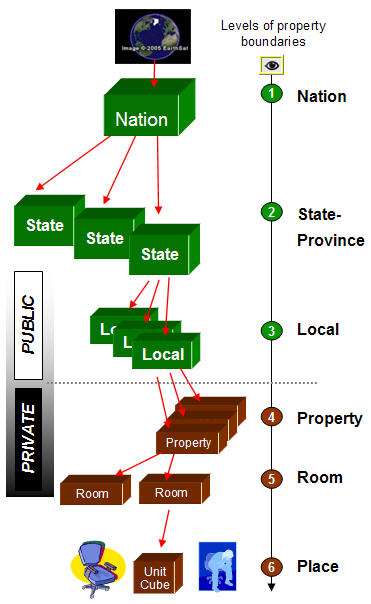The open structures and processes of nested place-based governments provides an infrastructure for transparency in society.
All other types of organizations are chartered, regulated, taxed by governments – private companies, public institutions, civil society groups, families, people. Everybody, and every organization, hooks into many, many “bureaus” of government at all levels all the time.
Externally, a map of government provides the visible shared terrain of jurisdictions, institutions, official positions, and relationships of accountability that are concretely based on mutually-exclusive boundaries drawn on the planet Earth. Upon this terrain, people and organizations can draw their own network maps as layers on top of and hooked into this shared multi-level government map.
Governments in their mutually-exclusive jurisdictions provide the infrastructure of stability for the society as a whole much as the formal hierarchy of jobs and management provides the core framework for organizational networks as a whole.
Internally, the government network map makes the far reaches of the bureaucracy accessible to everyone in it. As for private organizations, internal transparency leads to better shared mental models and smarter adaptive collaborative behavior by the people that hold government jobs.
We can’t improve what we can’t understand. We would rapidly improve our understanding and ability to collaborate if everyone had access to the same public model of each national, state, and local government network.
The nested hierarchy of jurisdictions provides the shared organizational terrain of our current complex global society
